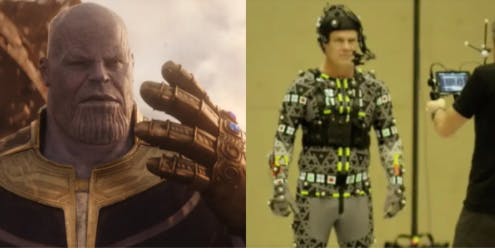Marvel Studios consistently brings amazement to the big screen, leaving viewers in awe of the groundbreaking effects that look strikingly real, but have you ever wondered how they do it? Sure, talented actors and well-written screenplays contribute to the franchise’s success, but much more goes on behind the camera than viewers realize. Here are a few of the secrets behind Marvel’s movie magic:
Wires help characters fly
For superheroes who perform impressive acrobatic stunts or hover feet above the ground, wires are often used to pull off this illusion. Every time your friendly neighborhood Spider-Man swings through the streets, there are about four to five wires attached to a harness that suspends him.
It seems anti-climactic, but the real heroes in these movies are the cables holding up platforms, “flying” ships and other props that are made to seem as if they are soaring through the skies. Even rubble during large explosion scenes are attached to wires, launching it backward in a controlled yet chaotic manner.
They use blue screens to imitate space
Technology has come a long way over time, especially in the movie industry. Films that create large universes rely heavily on green screen technology to animate as realistically as possible.
However, green isn’t the only color backdrop used as a canvas for digital depiction during post-production. For movies such as Guardians of the Galaxy, where the characters spend a lot of time in space, a blue screen was used.
A blue screen reflects less light than a green screen does, which works perfectly to show the deep void of space the heroes were constantly flying through. Typically, a green and blue screen are used interchangeably, depending on how much of each color is in the main shot. If blue is the dominant color on the subject being filmed, a green screen will be used, or vice versa.
Motion trackers help create CGI characters
Another technological advancement often seen in the Marvel Universe is motion trackers. Motion trackers are small, round, white spots that are attached to actors in order to capture their movements, which editors then put a digital skeleton over, to create CGI (computer-generated imagery) characters, such as Thanos.

This often looks ridiculous and nothing like how we view our beloved characters, which only makes one admire the acting ability of these performers and actors even more.
To add insult to injury, for characters such as Thanos or The Hulk, who are significantly taller than the other characters, the actors will wear a large poll or helmet to give their fellow actors an idea of where to look when interacting.
This was the same for smaller characters as well. Actors used a small baby Groot doll to give them something to look at when needed.
Smaller versions of these types of motion trackers can be seen strategically placed on certain muscles of an actor's face to capture their facial expressions, making CGI characters feel more realistic to an audience.
These types of trackers also play a large role in the de-aging process during flashbacks, such as Kurt Russell’s (Ego) trip back to the 80 in the Guardians of the Galaxy sequel.
Hours of makeup and prosthetics
Makeup work was also a necessity in the de-aging process and another tedious action that adds to the “Marvel magic.”
To do the makeup of characters such as Gamora from Guardians of the Galaxy, whose skin color is green, or Killmonger from Black Panther, who has raised dots on his skin meant to be scars, it takes artists nearly two-and-a-half to three hours. But the makeup team didn’t stop there.
Similar to the prosthetic scars all across Killmonger’s body, the actress playing Gamora had fake cheekbones, which were also prosthetic. They also created a fake shadow line that laid over where the actress' brows used to be to give her a slightly less human look.
This makeup must be applied in such a way that it does not come off during action scenes and stunts which, when done correctly, is its own kind of magic.
The action shots are filmed until perfect
It's hard to imagine how one can plan an explosion or a crash like in Doctor Strange, when Strange crashes his Lamborghini. Director Scott Derrickson wanted the crash to look a certain way, so the scene took several takes.
They ended up utterly destroying nine Lamborghinis until the scene was captured.
During large fight scenes, there is so much happening that it’s hard to slow it down and consider that every single explosion, leap, punch, fall and movement has been planned out to a T.
For example, in Captain America: Civil War, Cap is thrown out of a window, crashing into an awning then a large truck and finally to the ground. An awning had to be built and placed at just the right angle in order to pull this off.
Planning out and filming scenes like this are difficult enough to do without the challenge of hiding the pads and wires the actors are using to not seriously injure themselves, especially when, after all that planning, the scene itself could last a matter of seconds.
All of these elements combined create the multi-billion-dollar Blockbuster movie franchise we know and love to date. With technology forever growing, the sky's the limit, and we know Marvel Studios will reach for it — with a little help from their wires and harnesses.
"Movies" - Google News
January 19, 2022 at 09:50AM
https://ift.tt/3tARv3X
Here's how Marvel movies are filmed behind the scenes - The Post
"Movies" - Google News
https://ift.tt/2xuBIZW
Bagikan Berita Ini














0 Response to "Here's how Marvel movies are filmed behind the scenes - The Post"
Post a Comment